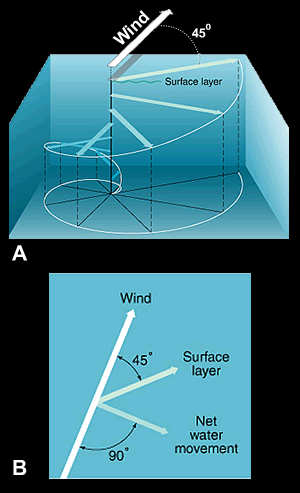An Ekman spiral (A) is a rotating column of water that forms when water moves at an angle to the wind direction due to the Coriolis Effect. The net effect of the rotating water (B) is movement at right angle to the wind direction. The example shown above is for the Northern Hemisphere. The water turns to the left instead of right in the Southern Hemisphere.
Click on image for full size
NOAA
How the Ocean Surface Moves: Ekman Transport
An explorer from Norway named Fridtjof Nansen froze his ship into the Arctic sea ice in 1893. He did this on purpose. He thought that trapped in sea ice, which moves with ocean currents, he would get to the North Pole eventually. For three years, Nansen and his ship drifted through the Arctic. He didn’t make it to the Pole. But he did have lots of time to make observations of the environment. One of his observations was that the ice was not moving in the same direction as the wind. It was moving consistently to the right of the wind direction. This phenomenon would later become known as Ekman transport.
As wind blows across the ocean, it moves water because of friction at the ocean surface. Because the Earth rotates, surface water moves to the right of the wind direction in the Northern Hemisphere and to the left of the wind direction in the Southern Hemisphere due to the Coriolis effect.
The speed and direction of the moving water changes with depth. Ocean water at the surface moves at an angle to the wind, and the water under the surface water turns a bit more, and the water below that turns even more. This makes a spiral of moving water 100 to 150 meters (330 to 500 ft) deep called an Ekman spiral. The average direction of all this turning water is about a right angle from the wind direction. This average is Ekman transport.
The Ekman spiral and Ekman transport are named for Swedish scientist V. Walfrid Ekman who first described the spiral in 1905. To help him make a mathematical model of these movements, Ekman used the observations that Fridtjof Nansen made while frozen into the Arctic sea ice.
You might also be interested in:
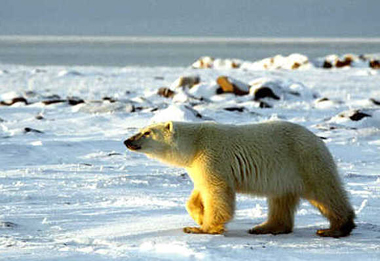
North of the Arctic Circle (at 66.5°N latitude) you will find the Arctic Ocean surrounded by the continents of Europe, Asia, and North America. You will find the geographic North Pole and the magnetic
...more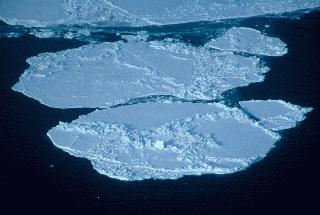
Sea ice is frozen seawater. It can be several meters thick and it moves over time. Although the salts in the seawater do not freeze, pockets of concentrated salty water become trapped in the sea ice when
...more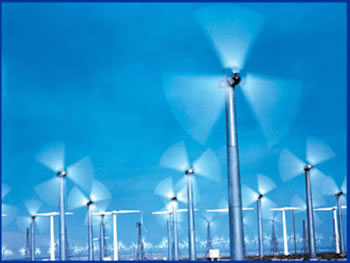
Wind is moving air. Warm air rises, and cool air comes in to take its place. This movement creates different pressures in the atmosphere which creates the winds around the globe. Since the Earth spins,
...more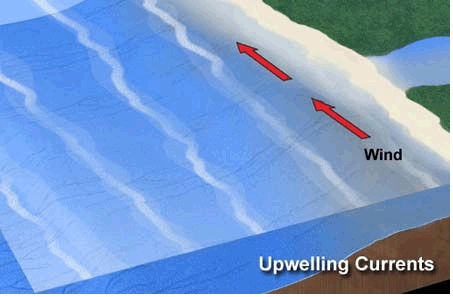
There are places in the ocean where water from the deep sea travels up to the surface. These are called areas of upwelling. The deep waters can have a large influence upon life in the ocean and the climate
...more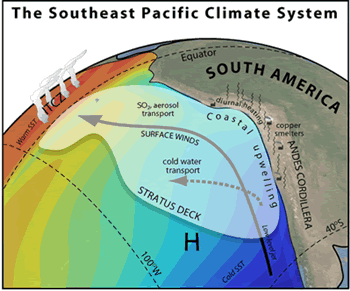
The Southeast Pacific Ocean region off the coastal areas of Peru and Chile is one part of the world where stratus and stratocumulus clouds are frequently present. Other areas include the subtropical climate
...more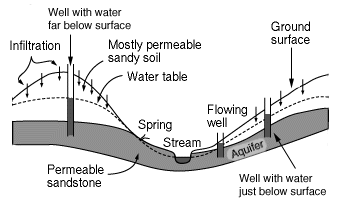
An aquifer is the name for a layer of rock which is capable of holding a large amount of water. Some layers are better at holding water than others, for example a layer of sandstone can hold a good deal
...more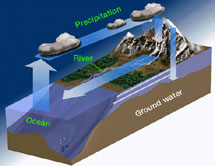
Carbonate is a name for rocks and minerals which contain a molecule made of both carbon and oxygen known as CO32-. (CO32- is also known as the molecule carbonate). Limestone is an example of a calcium
...more


